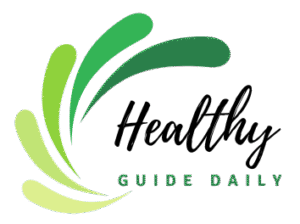A stealth opioid more potent than fentanyl is fueling an overdose crisis, exposing dangerous gaps in detection and threatening American families and values.
Story Snapshot
- Nitazenes, synthetic opioids 20 times stronger than fentanyl, are driving a deadly new wave of overdoses.
- These drugs evade standard toxicology tests, making diagnosis and reversal extremely difficult.
- Nitazenes often contaminate counterfeit pills and street drugs without users’ knowledge, endangering unwitting Americans.
- Public health and law enforcement face urgent challenges as nitazenes rapidly spread across the U.S. and Europe.
Nitazenes: Extreme Potency and Stealth Threaten American Lives
Nitazenes, a class of synthetic opioids first synthesized in the 1950s, have surged onto the illicit drug market and now threaten to eclipse fentanyl in lethality. With potencies exceeding fentanyl by more than twentyfold, nitazenes are responsible for a dramatic rise in overdose deaths since 2019. Unlike previous opioid waves, these drugs are often mixed into counterfeit pills and powders, frequently without users’ awareness, resulting in sudden and fatal overdoses that are difficult to diagnose and treat. This stealthy emergence challenges traditional drug detection and exposes vulnerabilities in America’s public health and law enforcement response systems.
Doctors warn of a stealth opioid 20x more potent than fentanyl | ScienceDaily https://t.co/JjhfqP3hDp
— David Sellers (@revslick) September 19, 2025
Standard opioid screens fail to detect nitazenes, meaning many overdoses go misdiagnosed or untreated, even as fatalities mount. Emergency responders face a growing crisis: nitazene overdoses often require higher or repeated doses of naloxone, and time lost in identification can mean the difference between life and death. Recent data reveals that in some regions, nitazenes now account for up to half of drug-related deaths, a staggering figure that underscores the urgency of this crisis. While new test strips and analytical methods are in development, most hospitals and law enforcement agencies are not yet equipped to identify these substances promptly, leaving communities exposed.
Illicit Trafficking and Regulatory Gaps Fuel the Spread
Illicit drug manufacturers have capitalized on regulatory gaps, exploiting restrictions on fentanyl analogs to push nitazenes into the market. These traffickers are motivated by profit and the ability to bypass routine detection, distributing nitazenes as adulterants in various forms—powders, pills, vaping liquids, and nasal sprays. The adaptability of these actors has outpaced federal and state regulatory efforts, as nitazenes continue to slip through enforcement nets and jeopardize American communities. Law enforcement agencies, including the DEA, are working to disrupt these supply chains, but the pace at which nitazenes are spreading poses significant challenges for traditional interdiction and prosecution strategies.
Doctors warn of a stealth opioid 20x more potent than fentanyl https://t.co/ja41pNLRz7
— McFlusion (@McFlusion) September 19, 2025
Policy Responses and the Need for Conservative Solutions
Federal and state policymakers, alongside medical and forensic toxicology experts, are under increasing pressure to adapt drug policies, update scheduling laws, and expand harm-reduction funding. The crisis demands a renewed commitment to individual liberty and family protection, prioritizing rapid deployment of new detection technologies and increased support for emergency medical services.
Uncertainties remain regarding the full range of nitazene analogs in circulation and their long-term health effects, highlighting the need for ongoing research and international cooperation. Public health agencies, law enforcement, and community leaders must work together to close detection gaps, strengthen prevention, and restore safety and stability. The fight against nitazenes is a test of America’s resolve to protect its citizens from evolving threats.
Sources:
Forgotten opioid has resurfaced as lethal street drug
Prestera Center Nitazene Report
Springer Nature review on nitazenes
DEA National Drug Threat Assessment







